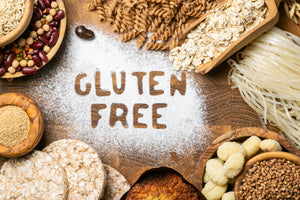Gluten Free Diet Guide
Oct 21, 2020
Going on a gluten free diet is a major undertaking, but it can make a positive difference in your life. Every food and beverage you consume needs to be examined for hidden traces of gluten. For those with celiac disease, serious intestinal damage occurs from gluten ingestion, increasing the risk of intestinal cancer. If you are trying to lose weight, following a strict no-gluten regimen allows you to properly assess the diet’s impact on your weight.
What to Avoid
Gluten is a protein found in wheat, rye and barley, so any product containing those three grains must be avoided. Certain grains like oats have a high incidence of cross-contamination with gluten, so while they are naturally gluten free, it is safest to only consume grains that have been certified gluten free. Gluten is also found in beverages such as beer.
Check labels carefully. Gluten is found in most baked goods and many snacks, processed foods and sauces. When dining out, avoid menu items that are breaded, fried, marinated or topped with sauces.
What to Enjoy
There are many naturally gluten free foods and beverages to enjoy. Focus on whole foods like vegetables, fruits, eggs and safe grains, such as rice, corn and quinoa. When preparing lean meats and seafood, stick with simple preparations like grilling or baking. Make your own sauces and dressings with olive oil, citrus fruits and fresh herbs. Certified gluten free products can safely be consumed, but if you are concerned about weight management, eat gluten free snacks and desserts in moderation.
Hidden Gluten Sources
Gluten can be found in a wide range of products including soy sauce, vinegar, gum and imitation meat. Scan labels carefully for potential gluten red flags. In addition to additives like wheat starch, modified food starch sometimes contains wheat. Malt is derived from barley and must be avoided. There are other forms of wheat to stay clear of including spelt, durum, semolina and farro.
Cross-Contamination
Any gluten free product that is processed in a facility where gluten-containing products are also manufactured runs the risk of being cross-contaminated with gluten. Very sensitive individuals should only consume products that are made in a gluten free facility.
Restaurant dining is another major source of cross-contamination. Unless a restaurant is completely gluten free or dedicates separate surfaces and appliances for gluten free preparation and cooking and properly trains staff, your food runs the risk of gluten contamination. Gluten free organizations can help you find a restaurant in your community that is gluten free-friendly.





